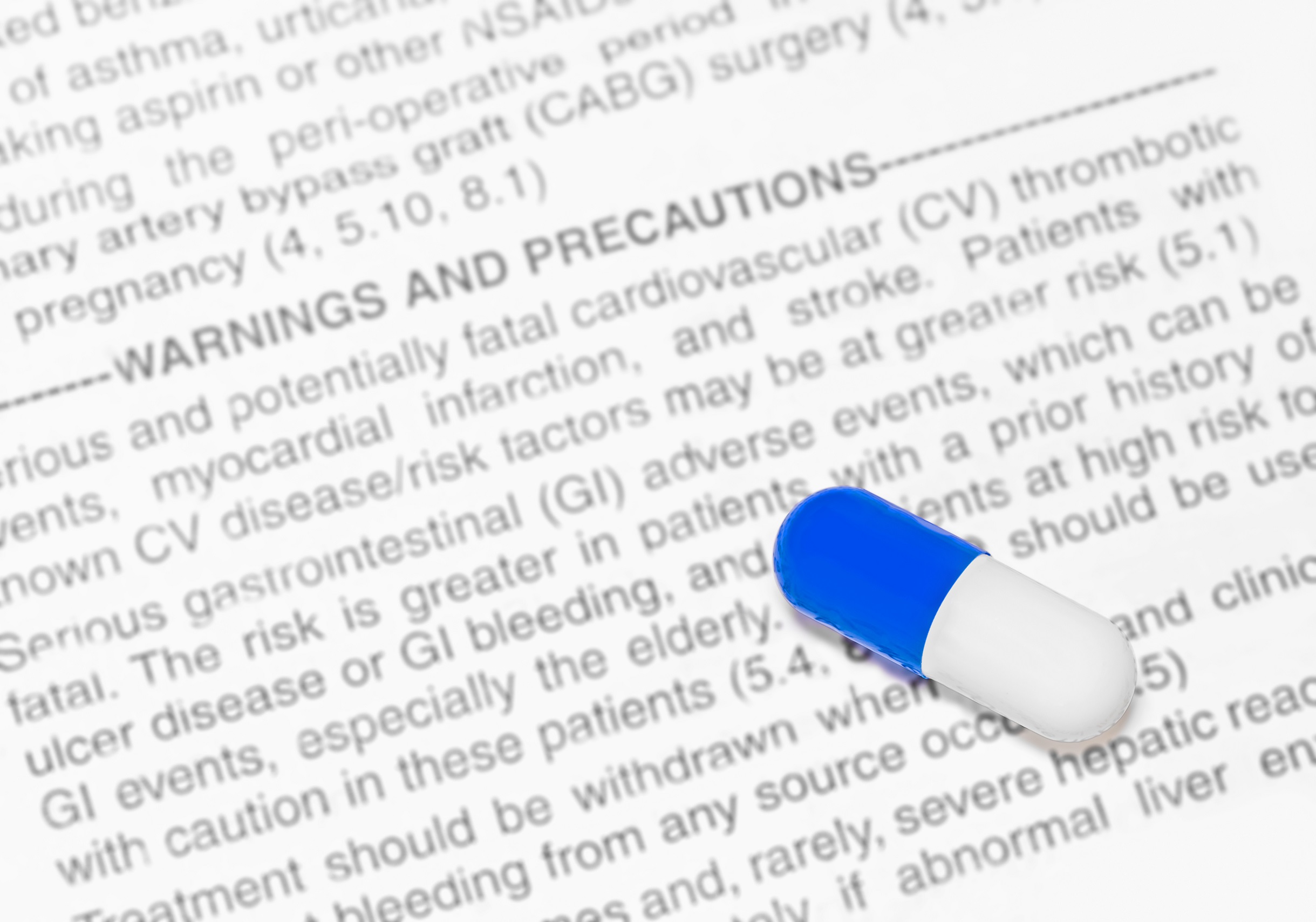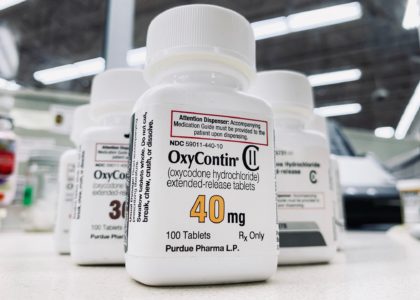
Invariably, the dilemma as to whether somebody should enter into short or long-term communion with pharmacotherapy is further compounded by psychiatric bias towards the latter and the propensity of mental health professionals in conceptualizing it as the ultimate extirpator of unsolicited cognitive deficits and emotional gains wrought from the subsistence of some mental condition, organic or not. Being a much more candid and uncomplicated path in the short-term, psychiatrists will deploy “magic bullets” to quell mental imbalances encompassed by a body of symptoms which, in the long run, would have probably responded in a much more favourable and sustainable manner to some form of psychotherapy. This happens over and over again in hospitals, high security prisons, private practices, and other health care facilities, and will continue to do so until more funding is pumped into educational programs aimed at raising awareness about the risks and complications associated with conventional and atypical psychotropic drugs. Sufferers wishing to be relieved of their wistful sojourn in a private mental purgatory will steadfast make their intentions known and psychiatrists will yield to these intentions without much resistance, partly because it absolves them from some deeper and more profound level of responsibility to do with choice and judgement at the clinical level, and partly because it affords them the analytical and reasoning space through which an illusion of having “fixed” individuals with composite mental issues might be germinated and sustained. We should also be mindful of the fact that as health care professionals, all psychiatrists are schooled under the auspices of a scientific paradigm regarding pharmaceuticals as the most powerful, efficient, and effective known defence against abnormal states of mind. How might we transcend and do better, or at least better than harming someone, when we haven’t an inkling of what that better is?
Psychiatrists deploy the same pharmaceutical agents in treating individuals, who, by virtue of their particular symptomological constitution, fall into one or another taxonomic class on the innumerable list of disorders outlined in the fifth edition of the Diagnostic and Statistical Manual of Mental Disorders (DSM-V). According to the family of diagnostic criteria and potential treatments offered in the pages of this manual, a level-headed businesswoman lapsing into anxiety and mild depression due to a monotonous lifestyle, an overwhelming workload, or the unprecedented arrival of a newborn baby into her family may be treated with anxiolytics like Diazepam and Librium; an unemployed youth of lower middle class standing who is slowly but surely withdrawing from meaningful relationships along the social synapse and slipping into the self-destructive vortices of clinical depression may be prescribed antidepressants of the serotonin-norepinephrine reuptake inhibitor class like Effexor and Prozac or the tricyclic drug imipramine; a middle-aged woman who has unintentionally and unconsciously surrendered her conscious will to the mental see-saw, the increases and decreases of two corresponding drafts, ebullient mania and fatalistic torpor, may be diagnosed with bipolar disorder and given mood-stabilizers like lithium carbonate or carbamazepine; and the introverted sophomore whose mental world is buttressed by incoherent thoughts and plagued by hallucinations and paranoid delusions will more than likely be diagnosed as schizophrenic and prescribed phenothiazine-derived drugs like neuroleptics or antipsychotics (i.e. chlorpromazine, clozapine, risperidone). In a nutshell there is something for every type of mental disturbance.
Anybody who understands full well the deleterious cycle prompted by psychotropic drugs would agree that there is ample reason for concern if a reputable scientific source were to suddenly reveal that prescription rates have started soaring in the last few years, right? And if the June 2014 edition of Australia’s leading independent medical publication, Australian Doctor, is to be believed, then a nightmare of this amplitude has already started manifesting in our consensus reality. In a startling centrepiece sourced from a trustworthy and reliable government review, writer Kate Aubusson reports that in many instances where children in their formative years of life have been diagnosed with autism, schizophrenia, or bipolar mania, the treating doctor sanctioned atypical neuroleptics as the favoured treatment option. What’s more, it appears prescription rates increased by a startling fifty-four percent between 2008 and 2011, with about 110 children receiving prescriptions for atypical neuroleptics in 2012.[1] When it came to prescriptions of antipsychotics for patients under nineteen years of age, an analysis of data gathered from pharmacy claims pinpointed paediatricians as the principal offenders, followed closely by GPs and psychiatrists.[2]
If the latter doesn’t stir some degree of controversy and angst in community health, then I’m not sure what will. Speaking in reference to the matter at hand, a child psychiatrist named Dr. Robert Adler articulates the collective concern: “I do not believe risperidone should be prescribed to under five-year-olds by a GP without specialist input,” he says. “It’s a drug with significant side effects and I would be very, very hesitant to start a child so young on such a medication.”[3] With the overall benefit of pharmaceuticals still rather speculative when it comes to the long-term management of symptoms and with treatment efficacy varying from patient to patient, one would safely assume that the only position any informed health care professional might care to adopt without fear of social reprimand is one of a reluctant chemist. Any deviation from that, no matter how minute, would be outright negligence.
In their plight to maximize capital, pharmaceutical companies will conveniently omit or downplay the notion that iatrogenic shadows are created each time the neuroleptic torch is set alight in clinical settings. Ever since their extraordinary inception in the 1950s conventional neuroleptics have gained international notoriety for the bizarre gamut of extrapyramidal side effects they’re known to spawn, most notably akathisia, a syndrome characterized by atypical feelings of restlessness and agitation; neuroleptic dysphoria or sustained depression; uncontrollable Parkinson-like tremors; weight gain; sexual dysfunction; neuroleptic-induced deficit syndrome, a condition whereby the patient undergoes a sudden loss of motivation leading to the fulfilment of fewer life goals; and spasmodic movements of the jaw and tongue, otherwise known as tardive dyskinesia. Doctors have frequently encountered far more profound and graver effects as well–things like agranulocytosis, a significant reduction of white blood cells in the body; a psychical-physical condition combining atypical fluctuations in conscious states, fever, and muscular rigidity called neuroleptic malignant syndrome
Chemists wishing to dampen the extrapyramidal effects of conventional neuroleptics (i.e. chlorpromazine) later developed a second generation of pharmaceuticals, the atypical neuroleptics (i.e. quetiapine, olanzapine, and risperidone) which were supposedly better tolerated and user-friendly. After repeated subjection to clinical trials, it became apparent that these, too, were associated with adverse complications like hyperlipidaemia, weight gain, and an increased risk for stroke and myocardial infarction. Then there’s calamitous epiphenomena intimately bound to but frequently perceived as unrelated to these side effects, such as the likelihood that life quality might drop precipitously as to foster the perception that life simply isn’t worth living. Sustained melancholia or depression of this type can lead to premature death at the behest of suicide. Hence in some cases it may be possible to trace the configuration of events leading to a patient’s suicide back to her induction into the world of psychotropic drugs. Once again the Hippocratic Oath has been obviated! What has come to light under our more conscientious analysis is that the second class of drugs preferred by many GPs and psychiatrists today are obviously no better than the first.
The placebo effect, as Sybo Schouten points out, has been shown to possess 55-60 percent the therapeutic efficacy of psychotropic medications in treating depression and alleviating pain.[4] Statistical support for an authentic and hierarchical connection between the higher faculties of cognition and emotion and the body in the sustenance of the equilibrium known as psychological and physical health deserves a bit more than a casual glance on behalf of health care professionals who are genuinely interested in satisfying the multilevel need of their patients. Perhaps any clinical attempts to correct the anomalous space afforded by ‘X’ should first be entrusted to the awesome power of the mind before petitioning artificial exogenous chemicals to do similar, if not the same, work.
[1] Aubusson, K. (2014), ‘Toddlers on Antipsychotics: Review Raises Concern over Soaring Prescribing Rates’, in Australian Doctor, 13 June, pp. 1-2.
[2] Ibid, pp. 2.
[3] Ibid, pp. 2.
[4] Pamela Rae Health, Mind-Matter Interaction: A Review of Historical Reports, Theory and Research (Jefferson, North Carolina: McFarland & Company, 2011), pp. 108.









